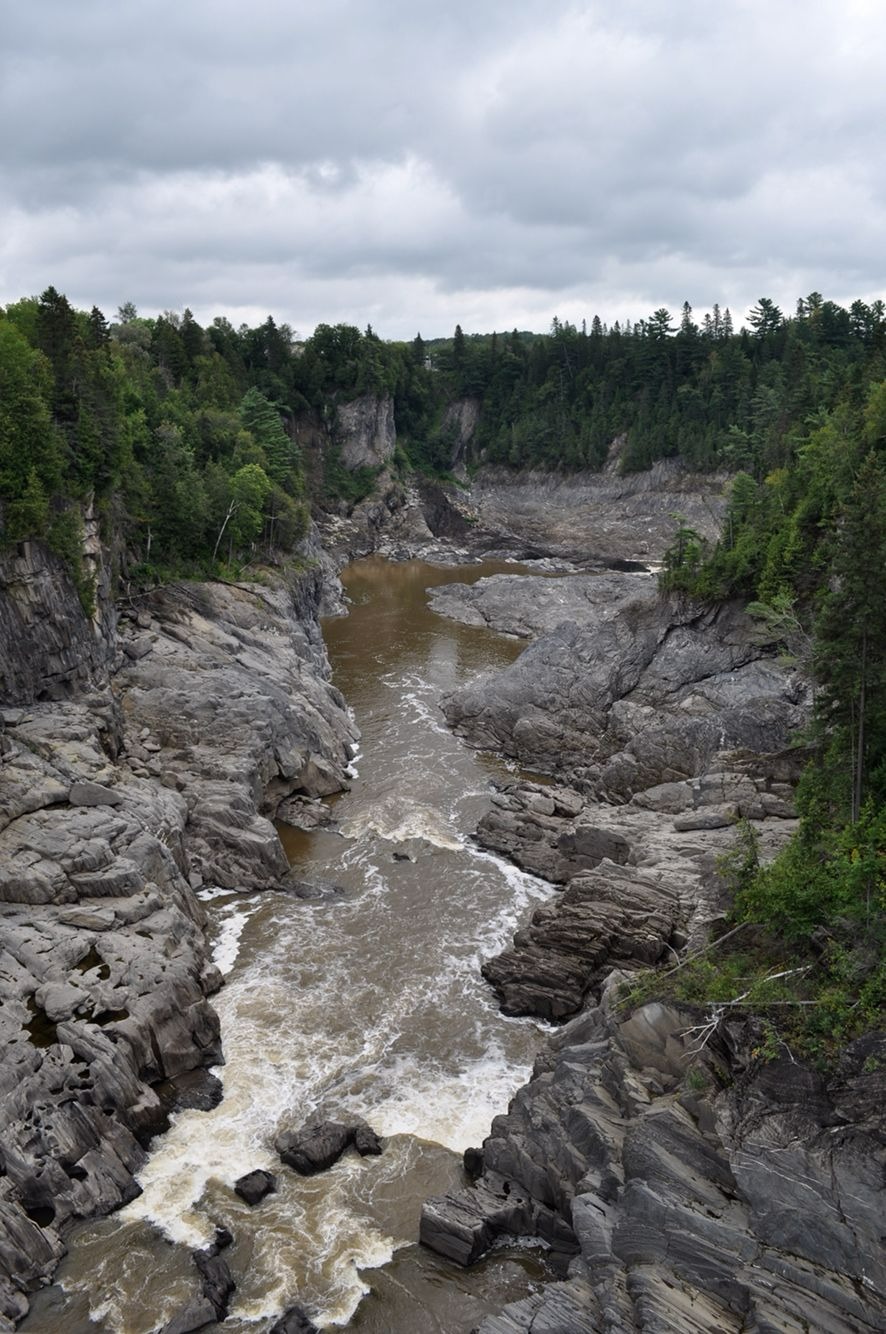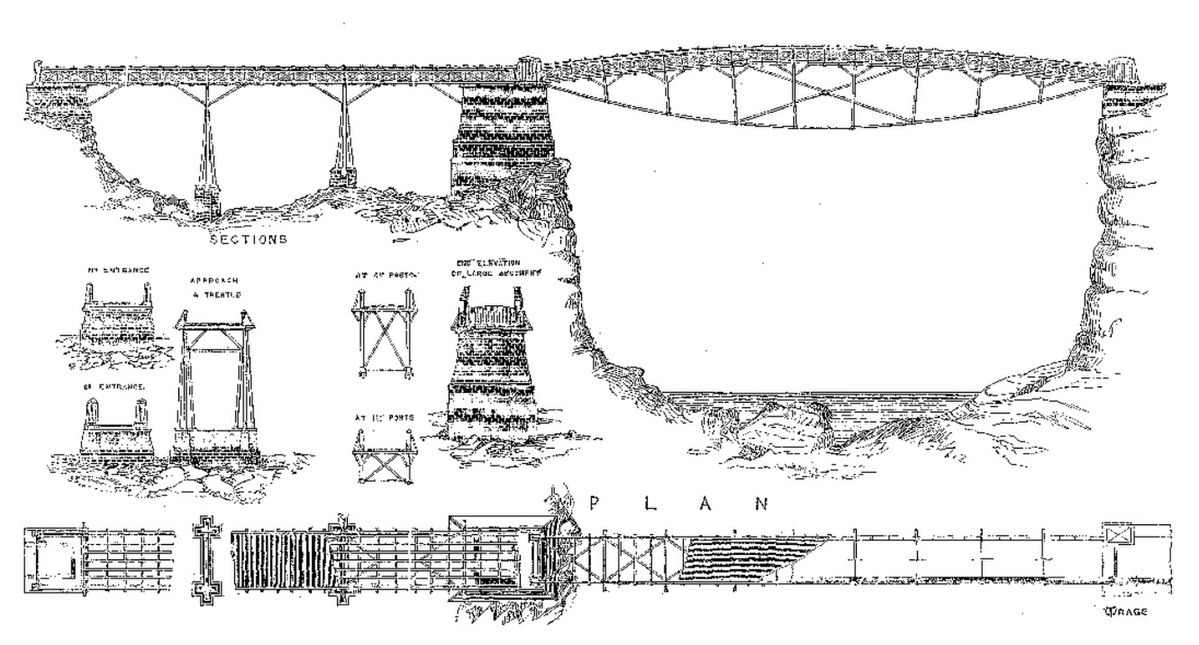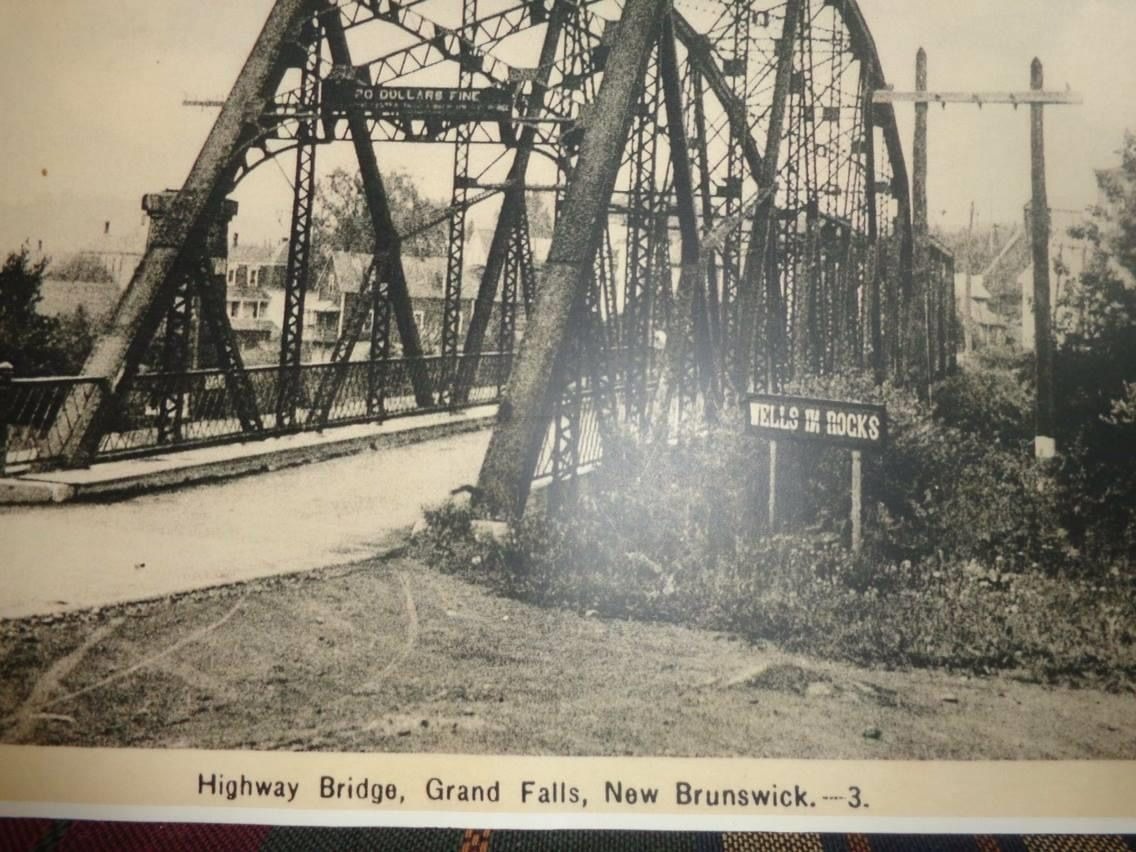
Pillars

Before the construction of bridges, a government ferry was built over the falls, far enough upstream for the water to be deep and slow. Backing up even before that, some people had their own boats, shelters and canoes, which came and went during the short summer season.
In winter, people crossed on the ice, and in the summer, when the water was very low, locals could jump from rock to rock and up the steep banks, but it was not very satisfying either. Despite the fact that they had a ferry, they demanded a bridge that would serve them all seasons, night and day, rain or shine.
Government surveyors came to examine the situation, plans were drawn up and tenders were issued. A difficulty had to be overcome from the outset. Although the plan of a village had been drawn up more than 10 years earlier, part of the side of the town still belonged to the British War Office in London. Even though the boundary had been officially established and located in 1842, there was always a possibility of war. In the end, a bridge would have been a military advantage. The War Department agreed to cede the remaining strip of land that included Broadway and access to the river.
Notations on a map dated 1858 make clear the fact of this transfer.

1st bridge
In 1857, a footbridge supported by suspended cables was built over the river so that workers working on the future bridge could go back and forth. This walkway was 3 feet wide and 90 feet above the water. According to the Carleton Sentinel (newspaper), "This little curiosity, suspended from 2-inch cables, stretched over wooden towers, and suspended at a dizzying height above the waters, roaring as they escape between the rocky cliffs, is calculated to test the nerves of many visitors."
The Government of New Brunswick began serious consideration of a bridge as early as 1852.
The 1st bridge was built in 1858. Suspended 92 meters from the falls and 37m high.
Tragically, it collapsed on December 18th, 1858, just two weeks after construction was completed, killing two men, two horses and a dog. The structure had broken at both ends and struck the rocks below.
The reason for the bridge's collapse occupies several pages in the New Brunswick Journal of the Legislature, but in short, the rigidity of the finished structure and its inability to expand and contract under extreme temperatures were considered primarily to blame. The fragility of iron used partly for construction was also cited.
2nd bridge



The 2nd bridge was built in 1860 from the same stone towers, but using a different kind of cable.
Instead of long iron bars bolted together, this second design consisted of a continuous bundle of threads, wrapped in cloth and bound round with more thread. This type of cable had been used for the first bridge over the Saint John Inverted Falls, as well as the famous Brooklyn Bridge and one of the first bridges in Niagara. It was solidly built, but there seemed to be no way to inspect the cables. It remained in service for 54 years.
It was only when automobiles began to make their appearance that it became clear that the bridge had become inadequate.
3rd bridge



In 1914, a 3rd steel bridge was built.
The 1860 bridge was only demolished in 1929, while pedestrians continued to use it. However, the wood floor deteriorated to the point of being too dangerous. The pillars remained in place until the construction of this bridge in 1976.
People called it the "big green iron bridge." This riveted steel bridge could support a load of 20 metric tons. It was used for 59 years.
4th bridge


Once again, the increase in road traffic forced engineers to design an even stronger structure.
The new bridge built in 1976 has three lanes and two sidewalks for pedestrians.
This 4th bridge was named in honor of Ron Turcotte. He is the jockey that shook the world as the rider of the powerful horse Secretariat, winner of the U.S. Triple Crown in 1973.
Continue exploring the QR point circuit, you will find the monument of the famous jockey to learn more about its history.
source:
History of Grand Falls - Margaret Marceau
www.umce.ca